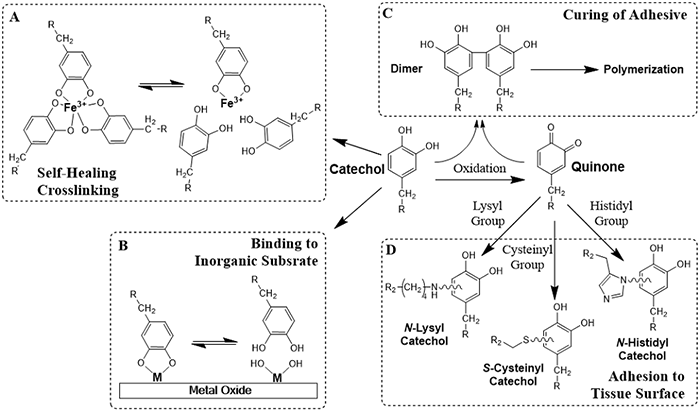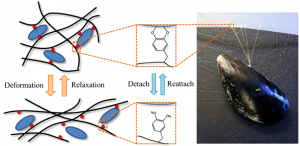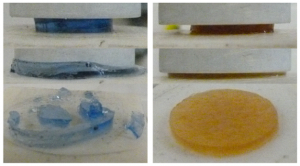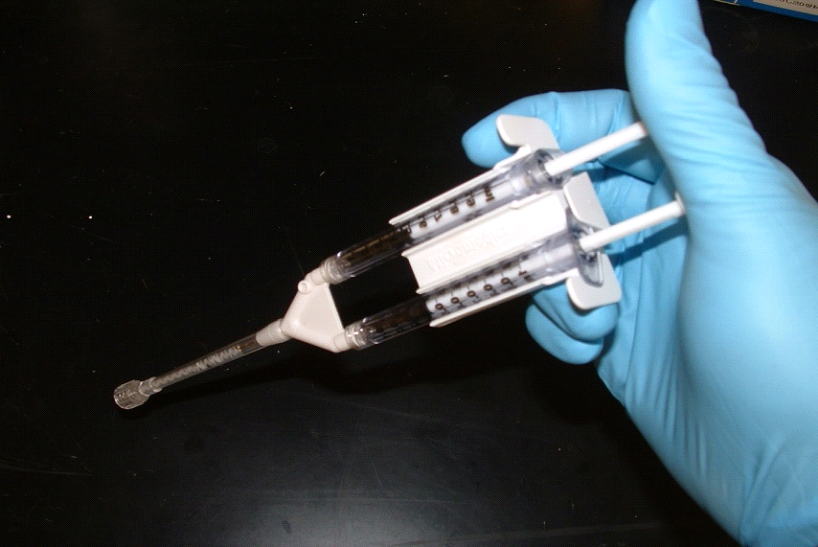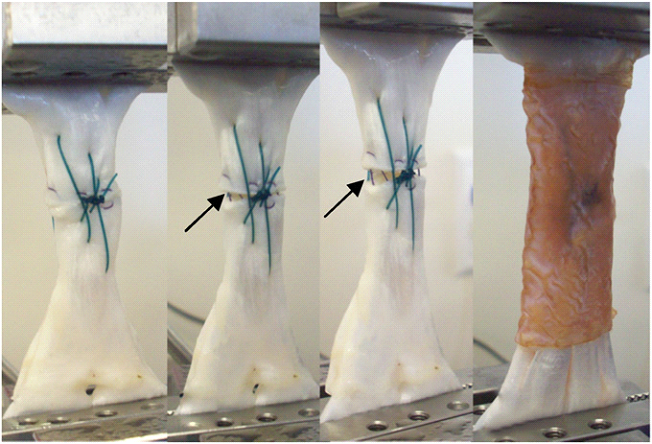Research
Our lab is focused on combining biologically-inspired molecular designs with chemistry, polymer engineering and materials science principles in developing advanced and functional materials for various biomedical applications. In particular, we are interested in elucidating the adhesion chemistries and biocompatibility of biomimetic adhesive moieties found in mussel adhesive proteins and use this knowledge to create multifunctional biomaterials. Currently, we have three main research thrusts:
Elucidate adhesion mechanism and biocompatibility of biomimetic adhesive moiety
The catechol adhesive found in mussel adhesive proteins is capable of binding to both organic and inorganic surfaces through either irreversible covalent or strong reversible bonds. Incorporation of various catechol derivatives into synthetic polymers has imparted these materials with strong adhesive properties. We seek to design model systems to separately elucidate the crosslinking and interfacial binding chemistries and biocompatibility of the catechol group.
Designing advanced functional materials
Ability for biomimetic adhesive moieties to form strong reversible bonds is exploited to created nanocomposite hydrogels capable of resisting repeated loading with minimal loss to its initial mechanical properties. Breaking of reversible bonds dissipates fracture energy while minimizing structural damage to the polymer network. The long term goal of this project is to develop high water content, soft biomaterials with materials properties approaching those of connective tissues that routinely experience large, repeated loads (e.g., cartilage, tendon, and ligament).
Novel hydrogel actuators using biomimetic chemistry
Hydrogels that can change their shape and physical properties in response to environmental stimuli (e.g., temperature, pH, humidity, electricity) are currently being explored as soft robotic components, biosensors, artificial muscle tissues, and controlled drug delivery applications. We are developing novel hydrogel actuators using reversible catechol-metal ion chemistry that contributes to the wear resistance properties of the protective coatings on mussel byssus threads.
Development of applied biomaterials
Biomimetic adhesive moieties will serve as a building block for designing tools for evaluating tissue-biomaterials interactions, multifunctional medical devices, and remotely modulated materials. In particular, our lab focuses on developing tissue adhesives with tunable physical, mechanical, and adhesive properties that combine high strength and the ability to support tissue ingrowth and wound healing.

